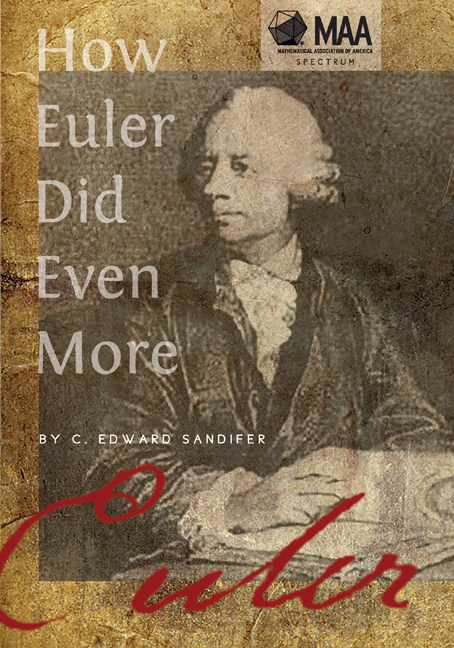10 - Life and Death – Part 1 (July 2008)
from Part III - Combinatorics
Summary
The history of mortality tables and life insurance is sprinkled with the names of people more famous for other things. American composer Charles Ives, who, like your columnist, worked in Danbury, Connecticut, also invented the insurance agency, so that insurance customers themselves no longer had to negotiate directly with the insurance companies. Edmund Halley, of comet fame, devoted a good deal of energy to calculating one of the earlier mortality tables. [Halley 1693] Henry Briggs, better known for his pioneering work with logarithms, calculated interest tables. Swiss religious reformer John Calvin preached that life insurance was not necessarily immoral usury, as somemaintained at the time. Daniel Defoe, author of Gulliver's Travels, proposed a national insurance scheme for England in 1697. We find other familiar names, DeMoivre, Fermat, Harriot, Hudde, Huygens, de Witt, van Shooten, Maclaurin, Maseres, Pepys and, of course, Euler.
Euler wrote half a dozen articles that related to mortality and life insurance, and several other articles about lotteries and card games that used many of the same principles of probability. His first excursion into this particular subject was in 1760, when he had been working in Berlin for almost 20 years. Euler was probably inspired to write Recherches générales sur la mortalité et la multiplication du genre humain, (General research on mortality and population growth of human kind) [E334] by his colleague at the Berlin Academy, Johann Peter Süssmilch, who published a book on population and mortality tables in 1761.
Süssmilch's interest was in the spirit of the times. Many European cities, including Berlin, had recently taken censuses. In 1747, Berlin took two censuses, the first counting 107,224 residents, and the second differing by less than 200. [Lewin 2003] In 1755, they counted 126,661. In 1748, Euler put some examples in his Introductio in analysin infinitorum[E101] to show that observed populations in the hundred thousands and millions were not inconsistent with a world-wide human population of just two at the time of Biblical Creation, assuming only modest growth rates.
- Type
- Chapter
- Information
- How Euler Did Even More , pp. 67 - 73Publisher: Mathematical Association of AmericaPrint publication year: 2014



